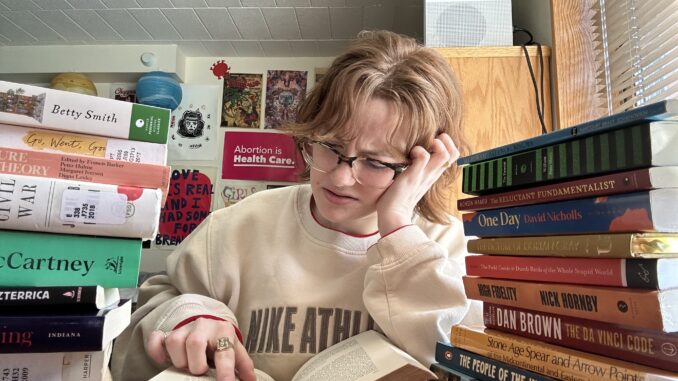
I don’t remember a time when reading felt easy.
I have dyslexia, which, contrary to what many believe, isn’t just about mixing up letters. Dyslexia makes reading a constant puzzle. It takes longer to get through passages, instructions sometimes don’t make sense on the first try and spelling can feel like a guessing game.
While other kids raced through chapter books, I struggled to untangle letters that seemed to dance across the page. Words blurred, flipped and disappeared and no matter how hard I tried, I couldn’t make sense of them the way everyone else seemed to.
Reading in School
I remember being in fourth grade during Drop Everything and Read, when all my peers would run to their pillows and various reading corners as I walked to the small table where my teacher would teach us in small groups. Except I was the only one in the so-called “small group.”
As we sat, she would try to help me to sound out big words and have me read out loud to her. A lot of the time I felt isolated and angry because I felt as though I wasn’t good enough, and that it would never get easier.
This made me hate reading.
One of the biggest challenges was the feeling of falling behind. I’d watch classmates fly through assigned readings, while I had to reread the same sentence five times just to understand it.
Reading small articles for school was fine, I could manage that, but getting assigned whole books would make me so frustrated I would just read the spark notes.
I didn’t have a problem reading aloud if my teacher gave us numbers or went alphabetically. I would count how many people were in front of me, then from there figure out what section I would be reading so I could read it over and over again in my head to be prepared so I wouldn’t look stupid.
The problem was when teachers had a vengeance against me and enacted my worst nightmare: popcorn reading.
Someone would call my name and my hands would start to sweat.
I could hear the impatience in the silence around me as I tried to decode each word. My face would turn red, and I could feel myself getting hot. One time my teacher saw me start to tear up and called on somebody else to finish.
But, I learned to adapt.
This isn’t one of those Disney Channel Bella Thorne videos. I didn’t magically learn how to read from cereal boxes and road signs. I would talk to the teachers I felt comfortable enough to tell and they would give me tips. With their help, I learned to slow down while reading, sound out words I didn’t know and remind myself that dyslexia wasn’t a bad thing.
Learning to Love Reading
Over time, I found ways to embrace my way of reading. But for a long time I was ashamed of having dyslexia and wouldn’t tell my teachers about it. I let myself suffer in silence. It wasn’t until I came to Albion that I accepted and started to truly learn from my dyslexia.
Along with listening to audiobooks – one of my best reading pals – I also like to use text-to-speech apps like Speechify or NaturalReader. These allow me to pick my reading pace and change the font size of the words so it’s easier for me to read them.
I also discovered that reading with a ruler or guide strips help me keep the words from jumping around.
Dyslexia has made me a more patient reader, forcing me to slow down and truly absorb what I’m reading. It’s also made me appreciate stories in a different way – since reading takes effort, every book I finish feels like a personal victory. And though I still have moments of frustration, I’ve realized that dyslexia isn’t a weakness; it’s just a different way of seeing the world.
If there’s one thing I want others to take away from my experience, it’s that dyslexia doesn’t mean you can’t love books or succeed in school. It just means finding new ways to read between the lines.

Leave a Reply